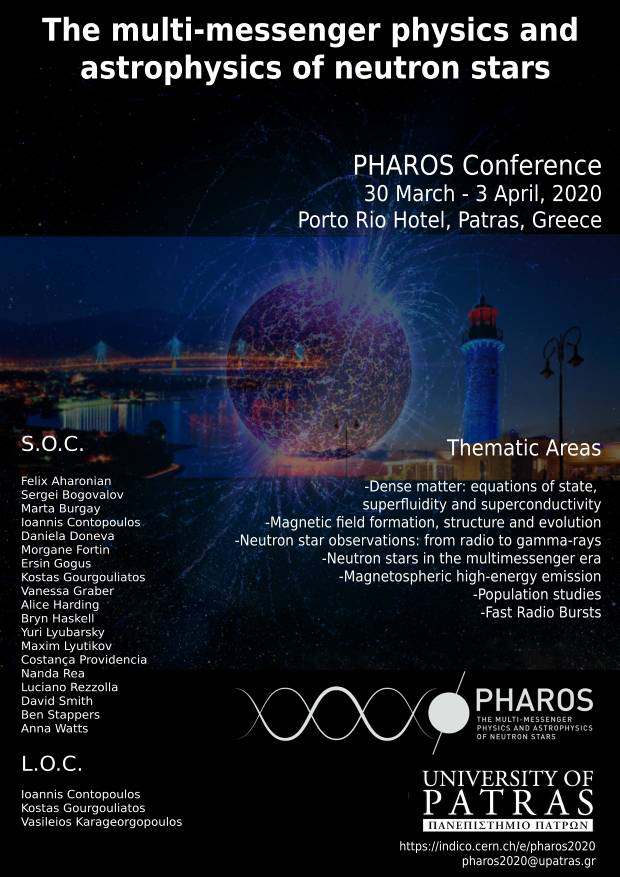Speaker
Description
The evolution of the magnetic field in NSs is strongly related to their internal structure. In the NS core there is a fluid mixture of neutrons, protons, and electrons (joined by other species at increasing densities) that scatter off each other through strong and electromagnetic interactions, causing effective friction forces, and can also convert into each other by weak interactions (‘‘Urca reactions’’). In hot, young NSs, frictional forces keep the different components moving together. As charged particles and neutrons have different density profiles, their joint radial motions are constrained by stable stratification, which helps to stabilize the field. However, Urca reactions, hugely enhanced at high temperatures, can adjust the composition of a fluid element while it is pushed by the magnetic forces, letting the matter behave as a single fluid with time-varying composition, which moves together with the magnetic field on a time-scale set by the weak interactions, avoiding the buoyancy force that stabilizes the field.
Here, we present simulations of the long-term evolution of the magnetic field in this “strong-coupling” regime in the interior of an isolated, axially-symmetric neutron star. Special attention in given to the characterization of the different physical processes involved, as well as their corresponding timescales, which happen to be in agreement with our numerical estimates.

